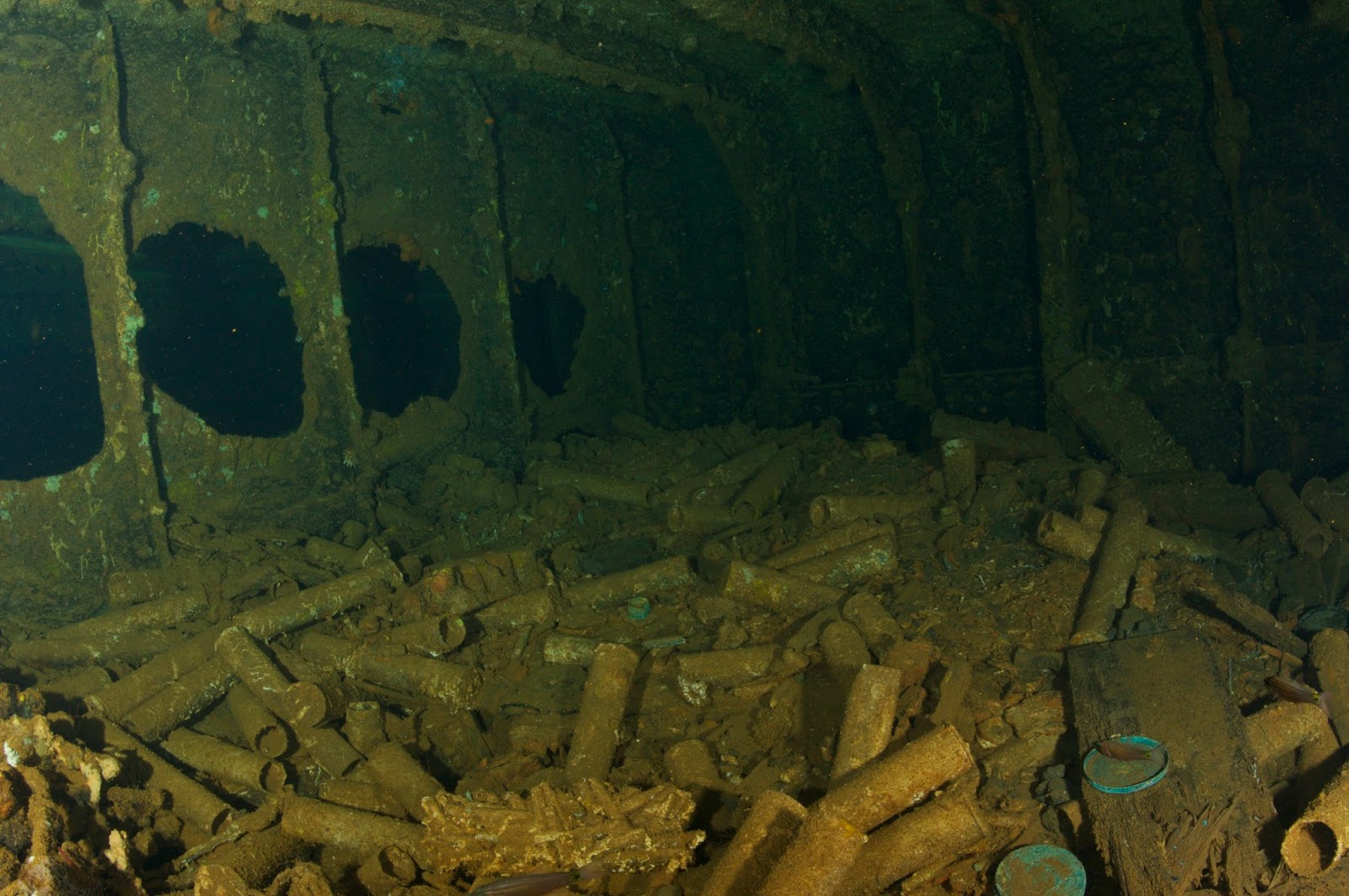The Fujikawa Maru was originally built in 1938 for the Toyo Kaiun Kisen Kaisha and was requisitioned by the Imperial Japanese Navy during World War II for use as an armed aircraft transport or ferry.
She was sunk in Truk Lagoon during Operation Hailstone and is now a leading wreck diving site for scuba divers.
Contents
[hide]History[edit]
The Fujikawa Maru was requisitioned in 1940 by the Japanese Navy, and was based in Indo-China under the command of the 11th Fleet. She saw service in the Battle of Midway as part of AiRon 7. On 12 September 1943 she was hit by a torpedo fired by the U.S. Submarine Permit, and returned to Japan for repairs. Subsequently on 5 December 1943 she was hit by torpedo bombers from the USS Yorktown suffering minor damage. From thence she was taken to Truk Lagoon (now Chuuk Lagoon) in the Federated States of Micronesia, to undergo repairs.
On 17–18 February 1944 she was hit repeatedly by US bombers and torpedo bombers as part of Operation Hailstone, before she finally sank on 18 February at approximately 7.15am.
Dive site[edit]
The Fujikawa Maru is regarded as the best scuba diving site in Truk Lagoon by both of the principal authors who have undertaken comprehensive surveys of the lagoon, Dan E. Bailey[1] and Klaus Lindemann.
Amongst the more striking features on the wreck are four disassembled fighter aircraft in one of the forward holds. Three of the aircraft are Zero fighters and the fourth is an A5M "Claude" fighter. The vessel also boasts a 6 inch bow gun, left over from the Sino-Japanese war and retrofitted.
The Times named it as one of the top 10 wreck dives in the world,[2] and Aquaviews ranked it as the fourth best wreck dive in the world.[3]
un enorme cañón adorna la proa del barco
los mástiles,por llamarlo de algún modo eran enormes...
el divemaster haciendo equilibrios sobre uno de los "mástiles"
en la popa se ubicaban varios telegrafos,este es uno de ellos
telegrafo de popa
montones de trozos de aviones zero,se ubican en lo mas profundo de la bodegas.....
la cola de un zero
fusiles de asalto,ametralladoras,un pequeño fuera borda,casquillos de enormes piezas de artillería pesada......
mascaras antigas,zapatos curiosamente de tallas muy grandes,lo cual es extraño ya que los japos de aquella época eran muy bajitos y de pies pequeños.........
grandes casquillos de obuses....







































No hay comentarios:
Publicar un comentario